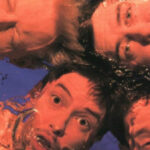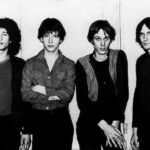 TV Funhouse was a short animated segment featured on the late-night sketch comedy show Saturday Night Live (SNL), created by Robert Smigel. It debuted in 1997 and became a fan-favorite due to its unique blend of irreverence, humor, and nostalgia. The segment, produced using a mix of traditional animation and puppetry, was a parody of various pop culture icons, political figures, and societal norms, often pushing boundaries with its edgy humor and surreal style. One of the most memorable and influential sketches from TV Funhouse was “Mt. T,” a satirical take on the world of pop culture and media.
TV Funhouse was a short animated segment featured on the late-night sketch comedy show Saturday Night Live (SNL), created by Robert Smigel. It debuted in 1997 and became a fan-favorite due to its unique blend of irreverence, humor, and nostalgia. The segment, produced using a mix of traditional animation and puppetry, was a parody of various pop culture icons, political figures, and societal norms, often pushing boundaries with its edgy humor and surreal style. One of the most memorable and influential sketches from TV Funhouse was “Mt. T,” a satirical take on the world of pop culture and media.
The Concept of Mt. T
The premise of “Mt. T” was simple yet highly effective in its comedic and satirical portrayal of the entertainment industry. The sketch revolved around a fictional, absurd “mountain” where celebrities and media figures gathered to engage in comedic and often exaggerated behavior. The humor stemmed from the way the segment turned the real-world celebrity-driven culture upside down, using a surreal setting to expose the absurdity of Hollywood and pop culture at large.
In the sketch, a towering mountain or “Mt. T” serves as the backdrop, where celebrities, represented through exaggerated caricatures or puppets, congregate to achieve their goals—usually at the expense of others. The use of a mountain as a metaphorical location for the entertainment industry was a brilliant comedic device, symbolizing a peak of absurdity, power, and influence. The characters involved, often exaggerated in their antics, parodied the obsession with celebrity, fame, and media power that characterized the late 20th century.
The Humor and Satire
What made “Mt. T” such a compelling part of TV Funhouse was its fearless approach to satire. The sketch did not shy away from skewering various aspects of celebrity culture, including the way the media elevates stars to godlike status, often distorting their personalities and lives. The show used clever visual metaphors and absurdist humor to comment on the excesses of fame, the superficiality of Hollywood, and the general absurdity of entertainment media.
For example, characters who would normally be seen as untouchable celebrities were turned into ridiculous, one-dimensional caricatures, revealing the hollowness behind their public personas. The inclusion of fictional, exaggerated moments from pop culture also allowed the sketch to push boundaries and explore dark humor in a way that mainstream television at the time often avoided.
The absurdity was heightened by the animations, which were often surreal, and the combination of exaggerated caricatures and the bizarre premise of Mt. T created a unique comedic tone. The segment’s tone had a blend of dark humor and light-hearted parody that played off both the inherent absurdity of the entertainment world and the viewer’s shared understanding of celebrity culture.
Legacy of TV Funhouse’s “Mt. T”
Although TV Funhouse and its “Mt. T” sketch were short-lived, they made a lasting impact on the way television approached humor and satire. The segment’s critical lens on celebrity and media culture helped set the tone for other shows, especially in the realm of adult animation, where the blending of comedy and social critique became increasingly popular.
Ultimately, “Mt. T” stood out as one of the more memorable elements of TV Funhouse, and its influence can still be seen in later works that explore similar themes of media manipulation, celebrity culture, and the often absurd nature of public life.
This post has already been read 140 times!









